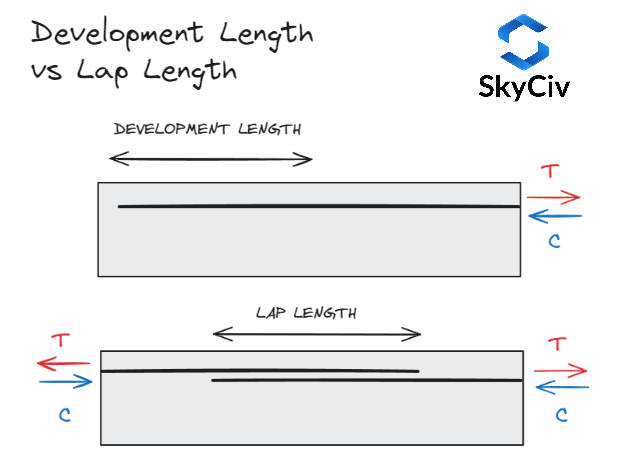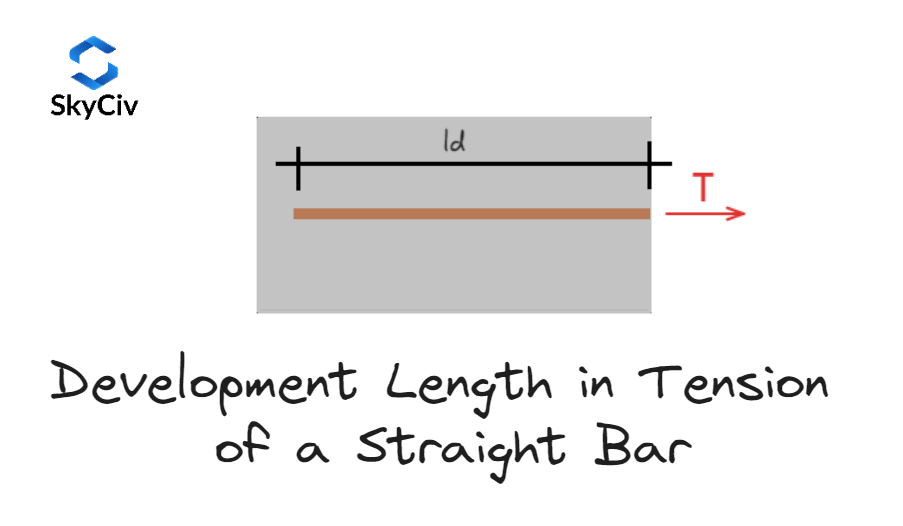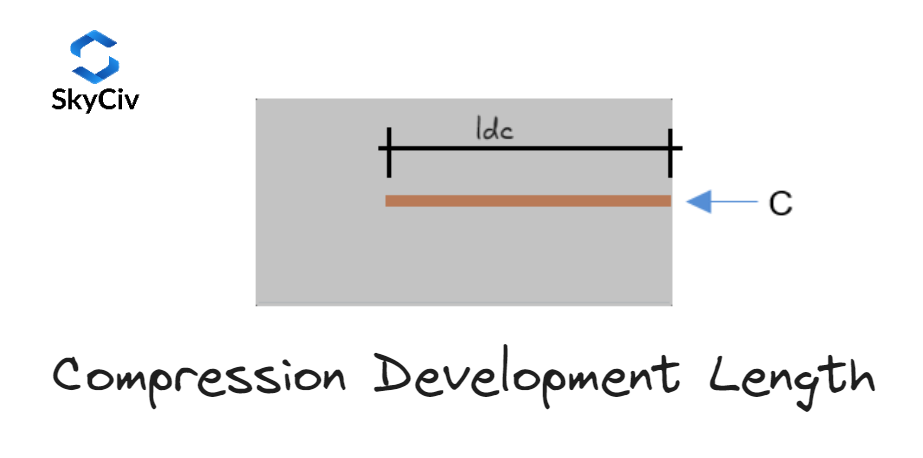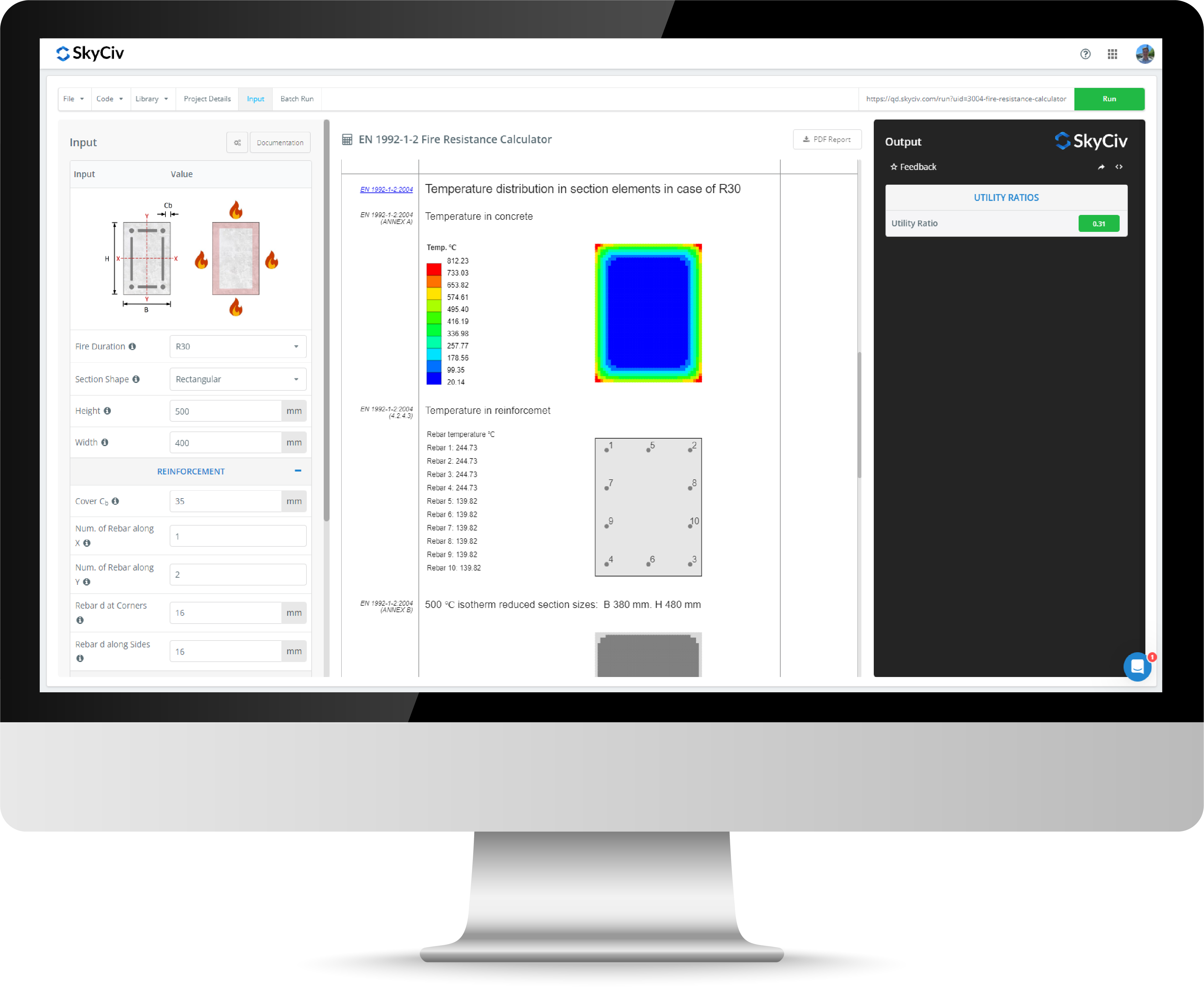Rebar Development Length Calculator
The SkyCiv rebar development length calculator is designed to allow engineers to calculate the tension and compression development length of steel rebars to various codes. The development length software supports the following global standards:
- Australian Standards - AS 3600:2018
- United States - ACI 318-19
- Europe/UK - Eurocode 2: Design of Concrete Structures (EN 1992-1-1)
The tool is part of the SkyCiv Quick Design library and follows the appropriate development length formulas for each standard and produces results for both rebar development lengths in tension and development lengths in compression. Users can also reference rebar development length tables for quick guidance. Using the development length calculator, engineers can quickly determine values for both tension and compression.
About the Development Length Calculator
What is the development length of reinforcement?
The development length of a rebar in concrete design is the minimum length that a steel reinforcing bar must be embedded into a concrete column / slab to ensure that the steel bonds adequately with the concrete and achieves its full yield strength under tension or compression. By calculating rebar development length correctly engineers can ensure that the bar does not "pull out" or de-bond from the concrete before reaching its full capacity under load.
Many factors can influence development length for rebar, including the rebar diameter, type, coating, concrete strength, cover, and spacing. Each different structural code (ACI 318-19, AS 3600, Eurocode 2) provides different development length formulas and rebar development length tables to calculate development length values.
Development length vs lap length?

Development length is calculated to ensure the full strength of a reinforcing bar can be transferred into the concrete section. If a bar is properly developed, it will fail (yield) before it de-bonds from the concrete. The development length calculator can help engineers quickly determine these values.
Lap length refers to the minimum overlap length between two reinforcing bars to ensure full stress transfer between them through the concrete section. You can learn more about rebar lap length with our lap length calculator.
Development length in tension

The development length for a rebar in tension is calculated to ensure the rebar remains embedded when experiencing tensile forces without slipping (or pulling out of concrete from loading). Larger reinforcing bars generally require longer rebar development lengths in tension. Cogs, hooks and headed anchors can be added to rebar to reduce the minimum required rebar development length in tension.
Development length in compression

The development length for a rebar in compression is calculated to ensure the rebar does not slip (stays anchored) under compressive loading on the concrete section. When concrete is in compression the rebar is essentially being squeezed so the bond it has with the surrounding concrete must be secure to prevent it from moving or buckling. Generally, this is shorter than development length in tension because compressive forces push the rebar into the concrete and help to enhance the bond strength. Often, compression development length for rebar depends largely on concrete strength and rebar diameter and is less impacted by factors such as rebar coating. Cogs and hooks are often ignored when calculating compression development length.
How does concrete strength impact development length?
Higher strength concrete generally reduces the required development length for rebar for a given rebar diameter. This is because increased concrete strength increases the bond between the concrete and reinforcement (largely due to increased concrete shear strength).
What are hooked bars?
Reinforcement is often bent into a cog (90 degrees) or hook (135-180 degrees) at its ends to improve anchorage into concrete. Installing reinforcement with hooks can greatly reduce the required length to fully develop the rebar development length (up to 50%). In some cases, headed anchors (such as bar terminator) are used in place of hooks to assist with reinforcement development. Headed anchors are most suitable for narrow/congested concrete sections.
ACI 318-19 development length formula
ACI 318-19 contains calculations for the development length of reinforcement in Chapter 25.4. For development length in tension, engineers should refer to Section 25.4.2, while Section 25.4.3 covers development length for hooked bars, and development length in compression can be found in Section 25.4.9. The ACI 318-19 version of the rebar development length calculator details all these formulas.
AS 3600:2018 development length formula
For AS 3600:2018 the development length formula of reinforcement is outlined in Section 13 of the tool. Specifically for tension this is outlined in Section 13.3 while for compression this is outlined in Section 13.4. For a detailed look into the AS 3600 rebar development length formulas check the Australian version of the calculator above.
Eurocode 2 development length formula
In Eurocode 2 (EN 1992-1-1) development length is outlined in Section 8.4. Specifically, Section 8.4.2 contains the formula for the development length in tension while Section 8.4.3 contains the formula for the development length in compression. Please note that in Eurocode 2 (EN 1992-1-1:2004), the term "anchorage length" is used to describe what is commonly referred to as development length in other codes. The EN 1992-1-1: Reinforcement Anchorage & Lap Length version of the calculator that can be found above outlines the formulas in detail.
Related tools
Ready to upgrade? Check out our flexible plans.



